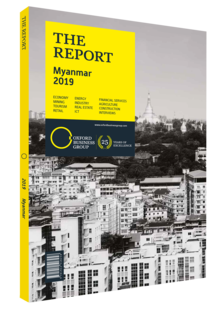Myanmar seeks private investment in rail infrastructure
With more than 6100 km of railway lines nationwide, Myanmar has the largest rail network in South-east Asia. While much of the infrastructure was built during British colonial rule – including major routes between Yangon and Mandalay and onwards to Myitkyina, Kachin State – more than half of the network was built under the State Law and Order Restoration Council after the military junta replaced the socialist party.
However, few of the older lines have been upgraded, and many of the newer tracks were laid with little, if any, commercial consideration. A chronic lack of investment has contributed to the poor quality of the lines, and a state-owned agency – Myanma Railways – is so underfunded that the Asian Development Bank (ADB) said in a 2016 report it could disappear by 2025 unless it overhauls its structure. In spite of the challenges, the fast-growing transport sector provides opportunities for investment, and the ADB said that with significant reforms, Myanma Railways could increase passenger volumes by a factor of seven and triple its market share.
Upgrades
A flagship project is under way to improve the 620-km Yangon to Mandalay route, which services about one-third of Myanma Railway’s intercity passengers. Funded by an official development assistance loan from Japan, the project will be split into three parts: the Yangon-Taungoo line, which covers 267 km; the Taungoo-Yamaethin line, which is 191 km; and the 161-km Yamaethin to Mandalay route. Work began on the first phase in November 2018, and once all phases are complete, journey times between Yangon and Mandalay are expected to fall from over 12 hours to about eight.
Japan is also heavily involved in planned upgrades to the Yangon Circular Railway (YCR), which transports about 77,000 passengers each day and is crucial for the city’s commuters. In spite of its importance, services are generally unreliable, trains are overcrowded and the average speed is just 16 km per hour due to track congestion. Officials have said they hope work on the YCR will be completed by 2022, with travel times expected to be almost halved. Improvements to the line will also see automatic signalling systems introduced, as well as the purchase of 11 new six-carriage trains.
As with a large number of other infrastructure projects taking place in Myanmar, the railway upgrades are being pursued as public-private partnerships, a move that makes sense given the lack of state funding available to Myanma Railways. The involvement of private companies should enhance the prospects of works being completed on schedule.
Japanese firms are not alone on the scene, however. As part of its planned China-Myanmar Economic Corridor, Beijing is reportedly pursuing a high-speed railway that will connect southern China with Mandalay and then Kyaukphyu in Rakhine State, although further details had yet to be given as of end-2018.
Restructuring
Regardless of plans for new lines and upgrades, it is evident that changes are needed in the way the railways are run. Between 2009 and 2014 Myanma Railways lost one-third of its passenger and freight customers, mainly due to the liberalisation of vehicle imports. Although the rail project pipeline is encouraging, it is likely to take several years to complete, meaning the state-owned agency will continue to lose out on revenue to other forms of transport. As a result, more drastic measures are required, including reorganising Myanma Railways as a commercial enterprise, as well as financial restructuring, which could include converting the operator’s land into equity. Other measures recommended by the ADB include establishing an independent railway department and regulator with full government support.
Myanmar’s economic and political liberalisation in recent years highlights the opportunities on offer for those involved in the transport sector. However, as roads, ports and airports are upgraded, without changes, Myanma Railways risks being left behind, and a key transport mode that offers huge economic opportunity could be at risk of becoming obsolete.
You have reached the limit of premium articles you can view for free.
Choose from the options below to purchase print or digital editions of our Reports. You can also purchase a website subscription giving you unlimited access to all of our Reports online for 12 months.
If you have already purchased this Report or have a website subscription, please login to continue.

